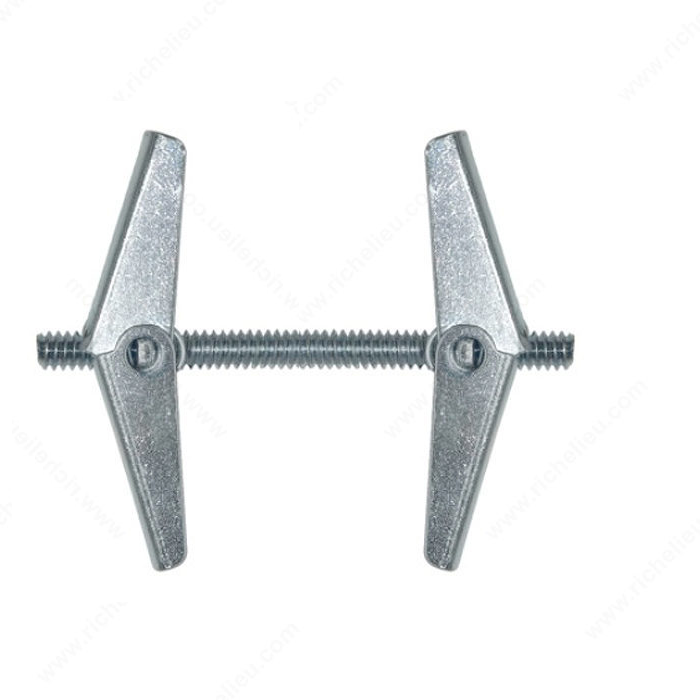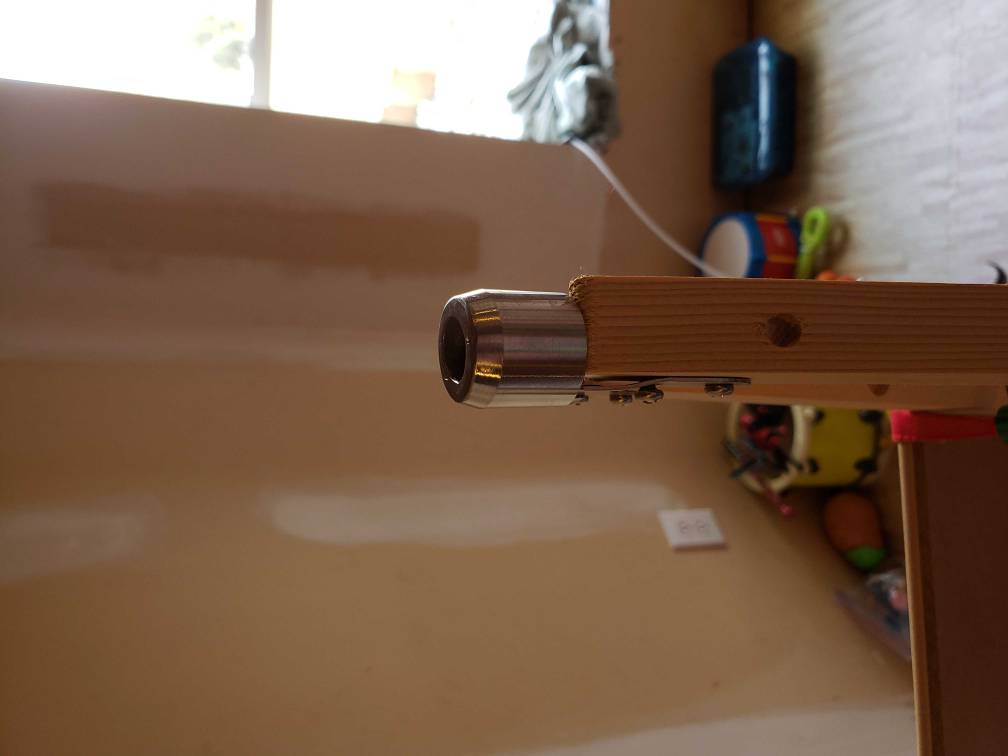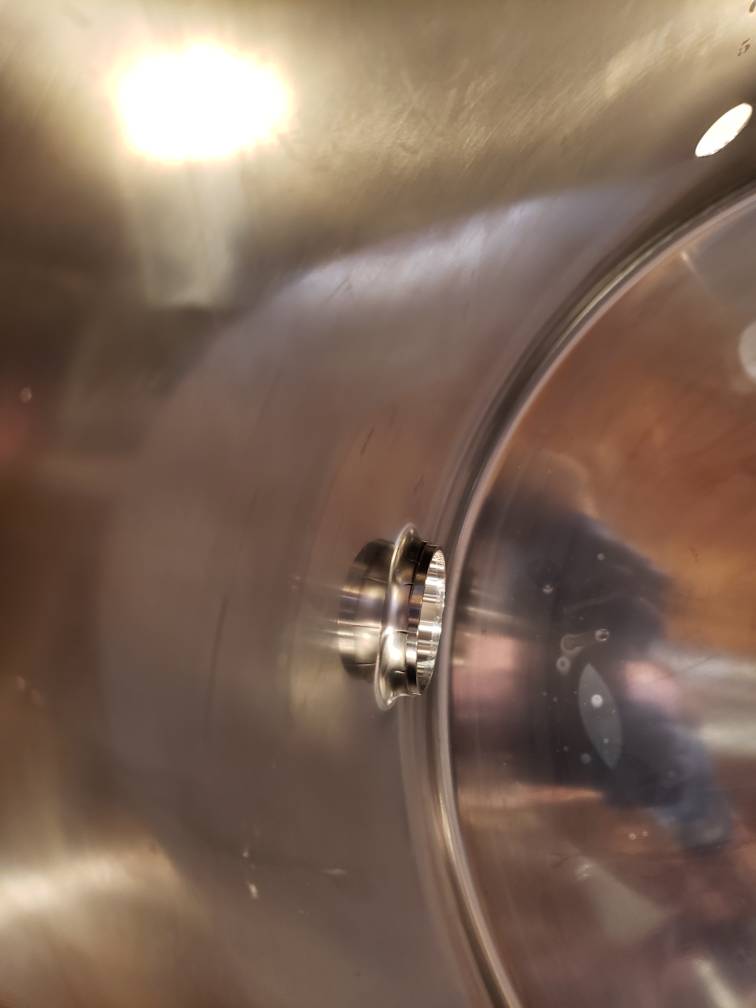wilserbrewer
BIAB Expert Tailor
Something isnt right with the soldering technique. One surface must be too cold.
Good advice here....properly soldered you wouldn’t be able to beat it off with a BFH

Something isnt right with the soldering technique. One surface must be too cold.

When I'm adding radiused flanges, it never hurts to "tin" both surfaces with flux and solder, let them cool, clean both surfaces. and then re-flux and solder. This way you're sure that both surfaces have solder around the entire perimeter. I normally use a threaded stainless steel rod and two spring-loaded toggle bolts to hold everything in place:
View attachment 611917
works well for me and is easy to remove.

Awesome thanks!Hey Bobby,
Just a heads-up that I mentioned your pull-through flaring tool in this month's Zymurgy as a follow-up to an article that I had published in last month's annual "Gadgets" articles.
They also have a photo of it












![Craft A Brew - Safale S-04 Dry Yeast - Fermentis - English Ale Dry Yeast - For English and American Ales and Hard Apple Ciders - Ingredients for Home Brewing - Beer Making Supplies - [1 Pack]](https://m.media-amazon.com/images/I/41fVGNh6JfL._SL500_.jpg)





Correct, hole was too small, but I used the bit he said to use. It was a bare to flare and used tons of solder to fill. It looks fine after solder and is water tight. Just think a larger bit is needed.I’m thinking perhaps your initial hole was a bit too small leaving too much meat to flare...
I’m sure Bobby will know better, but I couldn’t help myself from taking a guess...
Thinking the solder will hide and cover the cracks and it will still look good and function well...
Could be. I recall a thread debating their quality of SS. I still think a 42mm bit would be better. Anyone else install a 2" yet?I recall reading that the concord pots are a harder, and perhaps also a more brittle grade of stainless.
Have you tried a 42 mm bit? Might be the happy medium. That is about 1.65. Found them on ali Express, look to be about the same as your tungsten bits.I've done it about 10 times starting with a 40mm hole but none of the pots were a Concord. I have had another report of the washer bending but nothing like that picture. I think we're going to have to move up to a drilled out 2" TC blank cap to keep that from happening.
Since the hole has to get to 2" and 40mm is 1-5/8", that's only a 3/16" wide band. It looks like it got stretched in addition to 3/16".
Perhaps the 40mm is good on any pot smaller than 1mm and then I'd go up maybe to a 1-3/4" hole for thicker/harder walls. This is a delicate balance because you don't want to loose all that surface area for the solder to adhere to.
I know when I pulled 1/2" there was significant difference in difficulty between the m/m pull through fitting and the m/f pull through fitting which had different diameters. I got a spare lid, may order a 42mm and try it out.I haven't tried anything bigger than 40mm yet but I don't know that a single mm on each side is going to be fundamentally different.
I am needing the 1.5 TC pull through tool to do my kettles and Brewhardware is out of stock and with the coronavirus shutting everything in China down, there is no way to know how long it will take to get more. Does anybody have a tool they don't need who would be willing to sell it to me. I'll gladly pay full price and shipping. Located near Atlanta.
You can also silver solder a 1.5 TC RADIUS FACE SOLDER FLANGE from Bobby at Brewhardware.com. I've done this several times on kettles that I felt might split if I tried to dimple them. Plenty strong and no worries about splits.
So the same basic idea as your radius faced flanges. Makes sense. Would it be necessary to grind down the inside edge of the soldered flange to allow it to lay more flush against the top of the keg?No, this method won't work on anything larger than 2" and that's already pretty hard to accomplish. Your best bet would be to get a 4" TC spool as short as you can find because that will give you enough flange surface area for the solder.
I've been hoping the 1.5" pull through would come back in stock again, but still no dice and I'm starting to get antsy with wanting to proceed with my equipment mods. @GaBrewZoo I can't seem to PM people (relatively new account I guess), so if you still have a 1.5" you're willing to part with, could you message me?
And in case that pull-through isn't available, does anybody have ideas for anything I can use or build to act as a flaring die? I've been looking, but the closest I've been able to find would be a straight reducer from McMaster-Carr going up to 1-1/4" or 1-1/2" from 3/4" or 1".
I don't know how I've not seen this tool/process before, but I'd love to add some 1.5" TC fittings to my 14g domed conical lid. Will this distort the lid? Welders keep telling me they can't really do it for fear of warping the lid.
I don't know how I've not seen this tool/process before, but I'd love to add some 1.5" TC fittings to my 14g domed conical lid. Will this distort the lid? Welders keep telling me they can't really do it for fear of warping the lid.
It'd be for gas blowoff, so orientation really doesn't matter. But how sanitary is silver solder if I were to put a TC fitting on the body of the conical?As long as you don't mind the TC flange being parallel to the surface. There's no way to have them be plumb.